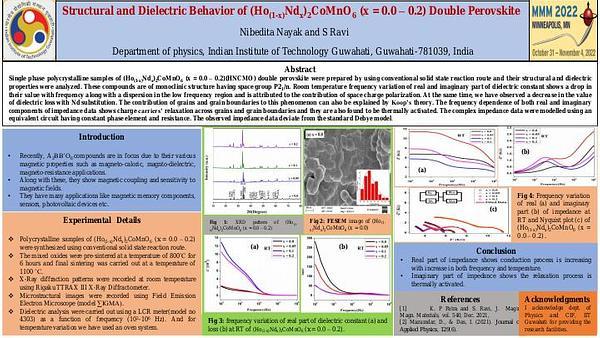Would you like to see your presentation here, made available to a global audience of researchers?
Add your own presentation or have us affordably record your next conference.
The use of time-varying magnetic field sources is indispensable in numerous applications, such as magnetic resonance imaging, sensors, motors, actuators, magnetometers or magnetic
refrigerators. Halbach cylinders have been used as an alternative to electromagnets, since they have no losses by the Joule effect. However, rod mangle systems are cheap and promising
alternatives to the currently used Halbach cylinders 1-3. The use of rotation patterns has potential for application in several innovative áreas 4.
In this work, we modeled rod mangle structures with different number of rods, aiming to control the magnitude, direction and homogeneity of the magnetic field. Figure 1 (a) shows the
modeled system for 3 rods. After determining the configuration with the maximum magnetic flux density at the center of each system, it was possible to generate a homogeneous magnetic
field. The homogeneity increases with the number of rods and for a large number of rods, the rod mangle structure begins to resemble an ideal Halbach. We also analyzed two different
rotation patterns to generate a decreasing magnetic field over time. For the first pattern only the direction of the magnetic field of the odd configurations remained constant. For the second
rotation pattern, after the magnetic field is reduced to zero, it starts to increase in the opposite direction and then decreases to zero again. If we rotate all rods counterclockwise, the
magnetic field will rotate clockwise, keeping the magnitude fairly constant. Finally, we validated the results experimentally with structures of 3 and 4 rods (Fig 1 (b)).
References:
1 J. M. D. Coey, Permanent magnet applications, Journal of Magnetism and Magnetic Materials 248 (3) (2002) 441–456.
2 O. Cugat, P. Hansson, J. M. D.Coey, Permanent magnet variable flux sources, IEEE Transactions on Magnetics 30 (6) (1994) 4602–4604.
3 F. Hiptmair, Z. Major, R. Haßlacher, S. Hild, Design and application of permanent magnet flux sources for mechanical testing of magnetoactive elastomers at variable field directions,
Review of Scientific Instruments 86 (8) (2015) 085107.
4 H. Sakuma, T. Nakagawara, Optimization of rotation patterns of a mangle-type magnetic field source using covariance matrix adaptation evolution strategy, Journal of Magnetism and
Magnetic Materials 527 (2021) 167752.

